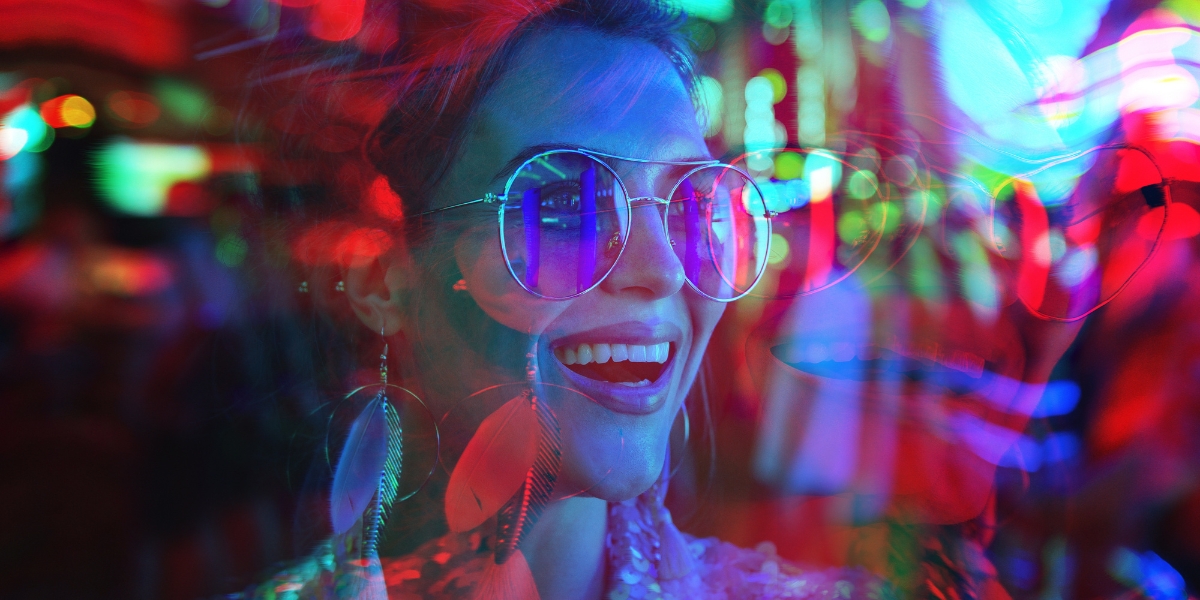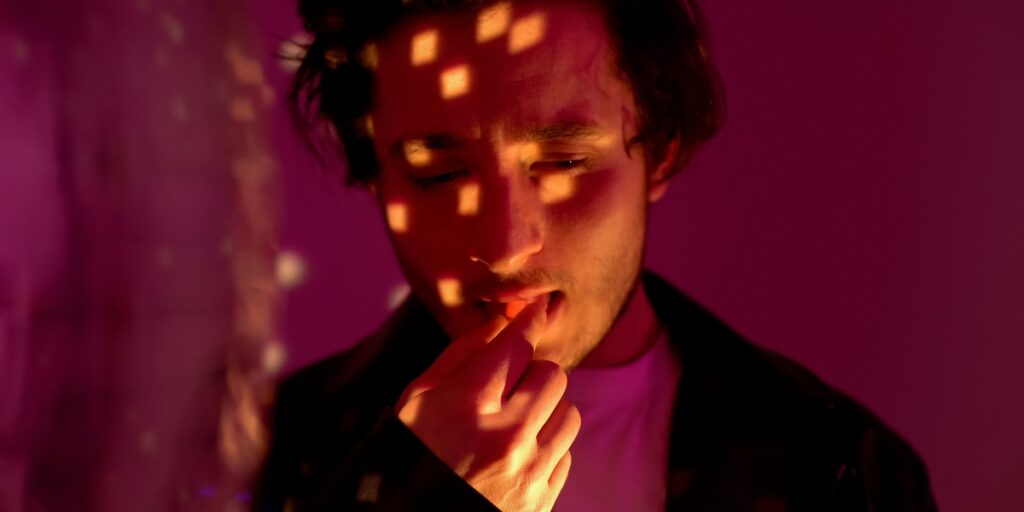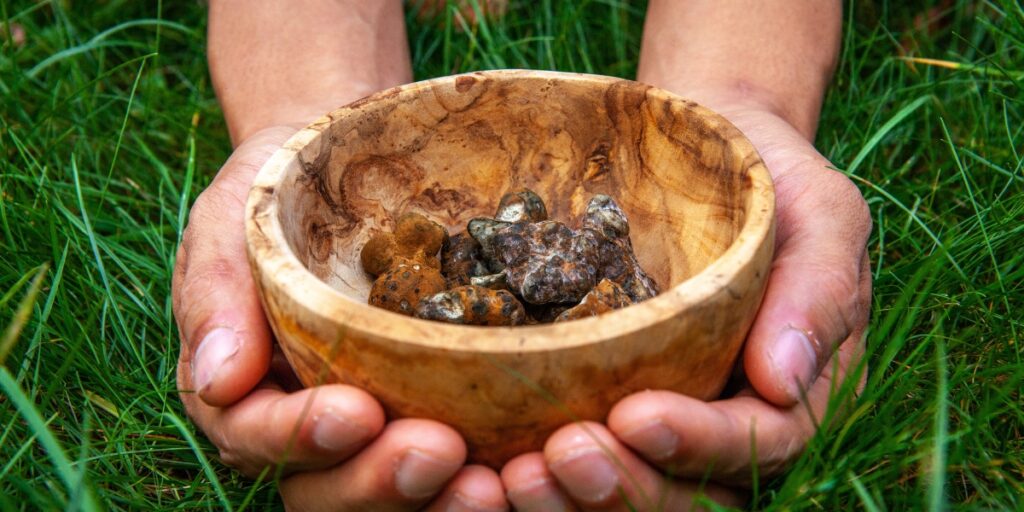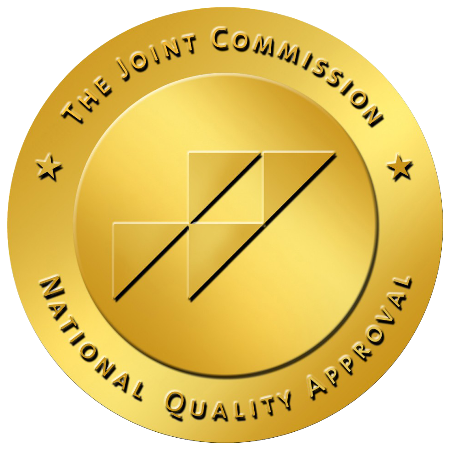What’s the Difference Between LSD and Mushrooms?

LSD vs. Mushrooms
The differences between LSD and magic mushrooms include their origins, histories, psychedelic effects, the doses needed to feel high, onset times, and how long they last.
Psilocybin mushrooms and LSD, or shrooms and acid, are both psychedelic drugs that interact with serotonin receptors to alter perceptions of reality and produce hallucinogenic effects. They mainly affect the regions of the brain responsible for perception, mood regulation, and logic. That is where the similarities end.
An LSD Overview
Lysegeric acid diethylamide (LSD) is derived from ergot, a fungus that grows on rye containing lysergic acid. By itself, lysergic acid does not produce psychedelic effects; it has to undergo a chemical process in a lab to turn into lysergic acid diethylamide, which is purely synthetic.
LSD is a white powder or a clear liquid; both forms are odorless and tasteless. Users ingest LSD by dissolving pieces of tissue or candy soaked in it on their tongues or putting drops into their mouths.
The History of LSD
A chemist from Switzerland, Albert Hoffman, was the first to synthesize LSD in 1938 and the first recorded person to take it in 1943.
The discovery of the structure of LSD led scientists to realize it is very similar to the form of serotonin. Because of the similarities, hundred of studies started on the effects of LSD for curing depression, anxiety, and what we now know as post-traumatic stress disorder (PTSD).
Some historians believe that manipulating ergot for psychedelic effects goes back to medieval times and ancient Greece for use in childbirth and ritual ceremonies.
LSD is considered a classic psychedelic and is mainly associated with hippies, the counter-culture, and musicians of the 1960s and 70s. Due to the political climate, the government quickly enacted laws to restrict the use and manufacturing of LSD. However, recently there has been renewed interest in studying LSD as a therapeutic drug.
The Acid Trip
The effects of LSD are called acid trips and can be unpredictable based on the user’s state of mind, mental health, and the environment when they take LSD.
LSD produces changes in brain waves resulting in changes in perceptions of reality, time, and self-awareness.
Acid trips have an onset time of about an hour to two hours, lasting from 8 to 12 hours. In extreme cases, when other drugs are present or a person takes a very high acid dose, LSD trips can last up to 24 hours.
Effects of LSD
People take LSD as a way to open up their minds and experience new perspectives; however, LSD can also cause physical effects and long-term changes in perception.
Effects of LSD include:
- Increased sociability
- Increased energy
- Vivid visual, auditory, and tactile hallucinations
- Restlessness
- Increased body temperature
- High blood pressure
- Rapid heart rate
- Quick mood changes
- Anxiety
- Depression
- Disassociation
- A feeling of floating or drifting through time
- Altered perception of reality
- Increased sense of connectedness to other people
Bad Acid Trip
Psychedelics and hallucinogens are unpredictable, and knowing how they will affect you is impossible until you’ve already taken them. People with a history of mental health issues are likelier to have a bad trip. A bad acid trip is when the hallucinations and sensations become terrifying and overwhelming.
Signs of a bad acid trip include:
- Upsetting flashbacks
- Disturbing visual distortions
- Hearing upsetting sounds
- Feelings of bugs or creatures underneath or crawling on your skin
- Paranoia
- Delusions that something or someone is trying to harm you
- Aggression
- Thoughts about suicide or self-harm
The only way to overcome a bad acid trip is time. Moving to a calm and quiet environment and having a sober person help soothe you can reduce the side effects, but there is no way to end an LSD trip early.

An Overview of Shrooms
There are over 200 varieties of mushrooms found in South America, Mexico, and the United States that contain the naturally occurring psychedelic compounds psilocybin and psilocybe cubensis.
Magic mushrooms are usually dried out and eaten, ground into a powder, or brewed into a tea for users to ingest.
The History of Psilocybin in Mushrooms
Cultures have used psychedelic mushrooms in ceremonies and medicinal purposes since before written history. Archeologists have discovered accounts of magic mushrooms and psychedelic experiences dating back 9,000 years, from Algeria to Guatemala and Mexico.
In the United States, mushrooms never gained the same popularity as LSD but became subject to the same laws banning them. Currently, some states are trying to legalize small amounts for therapeutic use.
The Magic Mushrooms Trip
Magic mushroom trips are generally less intense and shorter-lived than LSD, and users report mushroom trips as organic and nature-centered. Most mushroom trips have an onset time of 20 to 90 minutes and last between 4 to 6 hours, but some users have reported feeling the effects for several days after eating magic mushrooms.
Effects of Shrooms
For thousands of years, people have used shrooms to feel more open-minded and connected to nature and the spiritual aspect of life; however, mushrooms also have physical effects that add to the experience.
Effects of shrooms include:
- Shifting or morphing visuals of objects
- Intense visuals when eyes are closed
- Introspective feelings
- Feelings of heavy or weighted down limbs
- Stomach ache
- Nausea
- Vomiting
- Drowsiness
Bad Shroom Trip
Bad mushroom trips are less common than bad acid trips because the doses aren’t as strong; however, they share similar traits.
Signs of a bad shroom trip include:
- Upsetting visual hallucinations
- Uncomfortable physical hallucinations
- Paranoia
- Disturbing flashbacks
- Aggression
- Violent outbursts
- Panic attacks
- Suicidal thoughts
Time is the only thing that can fix a bad shroom trip. Finding a calm, quiet place to wait out can help relieve some overwhelming stimuli.

Combining LSD and Mushrooms
Combining LSD and mushrooms is sometimes called “a hippie trip,” but official studies on the effects are limited.
Chronic LSD users require higher doses of mushrooms to feel their impact. Because the drugs are similar and interact with serotonin receptors, mixing them will result in more prolonged and intense hallucinations.
Shrooms and acid both cause powerful mental effects; combining them may be playing with fire and increase the risk of long-term psychological effects and mental health complications.
Psychedelic Addiction
Psychedelic drugs are not physically addictive; their mental effects can lead to dependency. Many people who abuse LSD, mushrooms, or both, often struggle with addiction to other substances or polysubstance abuse. At Northridge Addiction Treatment Center, we understand that addiction to psychedelics can be a symptom of deeper problems.
We use dual diagnosis and medication-assisted treatment to address and treat substance use disorders and co-occurring mental health conditions. In cases of polysubstance abuse, we provide onsite medical detox with 24-hour care and support to ensure your comfort and safety during withdrawal.
Reach out to our treatment specialists today. We are eager to help you take the first steps on the path to recovery.
Find Meaningful Recovery
Our caring and compassionate specialists are eager to help you comfortably navigate this journey to recovery. Our individualized treatment plan, programs, and therapies may be a perfect match for you or your loved one. Let us assist you in living the happy life you deserve. It starts with a phone call.




